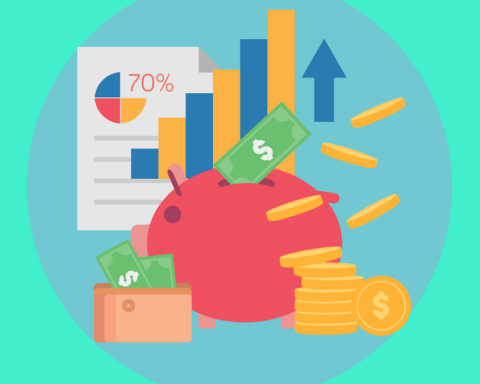Here’s the interview snippet from the interaction with Ms.Karunya Sampath, Co-founder & CEO of Payoda Technologies
Saumya: What kind of tech stack is followed today and how has it evolved in the last 2 decades?
Karunya: The tech stack used today varies depending on the specific requirements and needs of a particular application or system. However, some commonly used technologies make up the modern tech stack. In the last two decades, the tech stack has evolved significantly. The tech stack used to be simpler and limited to a few technologies. However, with the emergence of new technologies and the growth of the internet, the tech stack has become more complex and diverse. Some notable changes in the tech stack include:
- HTML, CSS, and JavaScript are the fundamental building blocks of the web.
- The rise of cloud computing and the emergence of cloud platforms.
- The shift towards a microservices architecture, where applications are broken down into smaller, independent services.
- NoSQL databases’ growing popularity provides greater scalability and flexibility than traditional relational databases.
- The emergence of new programming languages, such as Go, Rust, and Kotlin, offers better performance and productivity.
- The growth of frontend frameworks and libraries makes building complex and responsive user interfaces easier.
The tech stack has become more diverse and complex, with new technologies emerging rapidly.
Saumya: What are your views on ChatGPT? Are some technologies/jobs getting phased out?
Karunya: ChatGPT is a state-of-the-art language model that can perform various tasks, such as natural language processing, language translation, and text summarization. It has been trained on vast data and can generate coherent and human-like responses to a wide range of inputs. Like any AI model, ChatGPT has its limitations and biases, and its performance can vary depending on the quality and type of data it is trained on.
Regarding the second part of your question, some technologies and jobs are getting phased out while new technologies and job roles are emerging. This is a natural consequence of technological advancements and changes in the job market. For example, with the advent of automation and machine learning, some jobs that humans previously did are being replaced by machines. Similarly, some technologies that were once popular are becoming outdated as new and more efficient technologies emerge.
However, it’s important to understand that while some jobs and technologies may be phased out, new technologies and jobs are also emerging. There is a growing demand for artificial intelligence, data science, and cybersecurity skills. Therefore, individuals and businesses need to stay updated with the latest technological developments and acquire new skills to remain relevant in the job market.
Saumya: India is using UPI and other digital banking modes, how safe is the whole ecosystem, and from where is the next wave of innovation coming?
Karunya: The Unified Payments Interface (UPI) has become a convenient and secure way to transact digitally. Overall, the ecosystem is quite safe, and various measures are in place to ensure the security of transactions. For instance, UPI transactions are secured with two-factor authentication, and banks have implemented various security measures to protect customer data and prevent fraud.
In terms of the next wave of innovation, there are various areas where we can expect to see further advancements in the digital banking space. One such area is using artificial intelligence and machine learning to improve fraud detection and prevention. Another area is using blockchain technology to improve the security and transparency of transactions. Additionally, we can expect to see more innovation in areas such as digital lending, mobile banking, and personalized financial advice. Biometric authentication systems such as facial recognition and fingerprint scanning are becoming more common in digital transactions and can provide an additional layer of security.
Overall, the digital banking ecosystem in India is evolving rapidly, and there is much potential for innovation and growth in the coming years.
Saumya: What is spatial computing? What is it used for?
Karunya: Spatial computing uses technologies such as virtual reality (VR), augmented reality (AR), mixed reality (MR), and other immersive technologies where users interact with digital content in physical space. The term “spatial computing” emphasizes the importance of the spatial context in which digital content is presented and experienced.
Spatial computing is used in a variety of applications, including:
- Design and Engineering: Spatial computing can be used in design and engineering to visualize and simulate complex models and environments in 3D.
- Healthcare: Spatial computing can be used in healthcare to provide immersive therapy and rehabilitation experiences, as well as for medical training and simulations.
- Industrial Education and Training: Spatial computing can be used for educational and training purposes, such as simulating real-world scenarios for training in industries such as healthcare and aviation.
Spatial computing provides a new way for users to interact with digital content, providing more immersive and engaging experiences. It can potentially revolutionize several industries and transform how we work, learn, and play.
Saumya: Please share any new tech development trend that is brewing to create a storm in the tech world
Karunya: Another technology development trend that is currently brewing and has the potential to significantly impact the tech world is the development and adoption of edge computing. As you may know, Edge computing is a distributed computing model where data processing and storage are performed closer to the data source, such as sensors, IoT devices, and mobile devices, rather than in a centralized data center or the cloud. By moving computing closer to the edge of the network, edge computing can reduce latency, improve data security, and enable real-time processing and decision-making.
Some of the key technologies and applications that are driving the growth of edge computing include:
- 5G Networks: 5G networks are designed to support the massive amounts of data generated by IoT devices and enable low-latency and high-bandwidth applications.
- Edge Computing Platforms: Edge computing platforms provide tools and services that enable developers to build, deploy, and manage edge applications and services.
- Edge AI and Machine Learning: Edge AI and machine learning technologies enable the processing and analysis of data at the edge of the network, enabling real-time insights and decision-making.
- Edge Security: Edge security technologies provide a secure and trusted environment for processing and storing sensitive data at the network’s edge.
Overall, edge computing is still in its early stages. Still, it has the potential to transform several industries and enable new applications and use cases, such as autonomous vehicles, smart cities, and remote healthcare. As more organizations and developers adopt and integrate edge computing into their workflows and applications, we expect to see a storm of innovation and disruption in the tech world.








